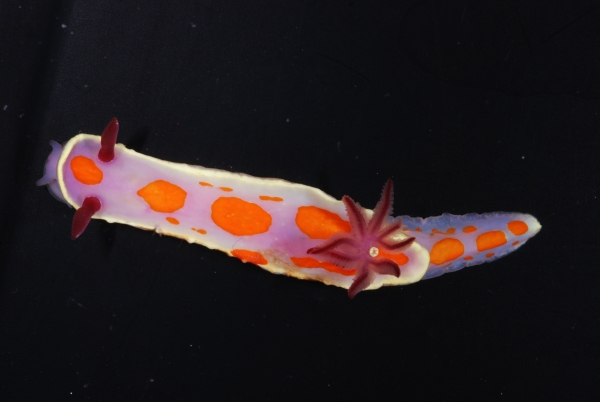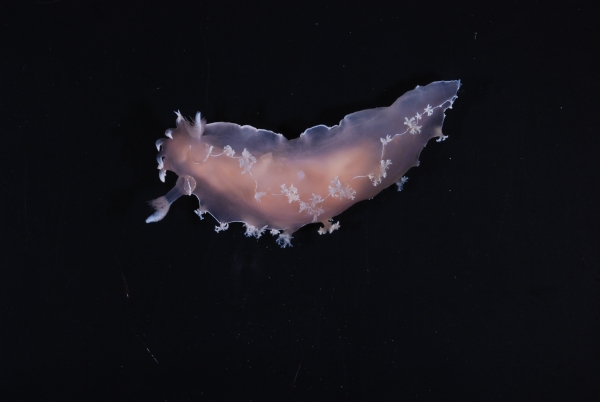This week’s critter, found from the northern part of New Zealand to southern Australia, is the brightly coloured and aptly named clown nudibranch, Ceratosoma amoenum. It is in one of the largest nudibranch families Chromodorididae. Nudibranchs (http://en.wikipedia.org/wiki/Nudibranch) are shell-less marine molluscs, their name means ‘naked gills’, and this group has some brightly coloured and beautiful animals. There are some absolute stunners on this national geographic website to give you a taster: http://ngm.nationalgeographic.com/2008/06/nudibranchs/doubilet-photography
Ceratosoma amoenum is often found living on sponges, on which they feed. It can sequester toxic metabolites from the sponges as a defensive mechanism against predation by concentrating the chemicals in their mantle glands making themselves distasteful to predators. Groups of feeding or copulating clown nudibranchs can easily be spotted and are often photographed by divers as they are found from the low intertidal to about 40m.
The yellow rimmed mantle of the clown nudibranch is covered in a variable array of orange spots. The spots are larger on individuals from New Zealand waters than those found in southern parts of Australia. This animal was collected from the Bay of Islands, in northland New Zealand. They are pretty small animals, this critter is only about 2 cm long. Credit: Peter Marriott, Oceans Survey 20/20 Bay of Islands, copyright LINZ.
The two purple antler-like structures at the front (left) of the animal are called rhinophores, and are an olfactory organ. The purple feathery gills are at the rear of the animal (right). Credit: Peter Marriott, Oceans Survey 20/20 Bay of Islands, copyright LINZ.
Tritonia incerta is another impressive nudibranch, in the family Tritoniidae. It is endemic to northern New Zealand and also known to use toxic metabolites from sponges to ward off predators. It is about 3 cm long. Instead of the gills being at the rear of the body as in the clown nudibranch, Tritonia incerta has 24 non-retractile feathery tufts around the edge of its body. Its rhinophores are surrounded by a tube like sheath with wavy margins, and it has 10-12 finger like tentacles surrounding its mouth.



